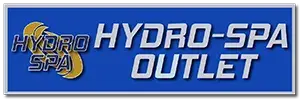A meticulous assessment of your hot tub’s operational efficiency often reveals crucial indicators that it’s time to replace essential components for effective hot tub repair. For instance, heater malfunctions typically manifest through erratic temperature control or failure to reach set temperatures, suggesting potential issues with heating elements or thermostatic controls. Similarly, pump failures are evident from symptoms like reduced water flow or unusual noises, indicating possible motor or impeller damage. Addressing these signs promptly not only restores functionality but also prevents further deterioration of the system. What remains to be explored is how these components interact and the subsequent impact on overall hot tub performance, a topic that merits further examination in hot tub repair.
Identifying Heater Malfunctions
Identifying heater malfunctions in hot tubs is a critical first step in ensuring the longevity and safety of your spa system. Comprehensive diagnostics should focus on several key indicators: erratic heating patterns, insufficient water temperature, and unusual noise from the heating unit.
The use of a multimeter to check the heater’s continuity is paramount; a lack of continuity can signal a faulty heating element. Additionally, inspecting the thermostat for accurate calibration is essential, as an improperly functioning thermostat can lead to overheating or underheating, stressing other components.
Similarly, the high-limit switch should be tested to ensure it cuts off power at the appropriate temperature, preventing potential overheating. Engaging with these technical assessments fosters a deeper understanding and proactive maintenance culture among hot tub owners.
Recognizing Pump Failures
Recognizing pump failures in your hot tub is essential for maintaining an efficient and operational system. The pump is the heart of your hot tub, circulating water and ensuring that heat and chemicals are evenly distributed. Failure to promptly address pump issues can lead to more significant system problems. Here are key indicators that your pump may be failing:
– Unusual Noise: Grinding or screeching sounds indicate bearing damage or impeller blockages.
– Low Water Flow: Reduced jet pressure or inadequate water circulation often signifies a clogged pump or failing motor.
– Power Fluctuations: Frequent stops and starts can be a sign of capacitor issues or electrical faults.
– Leakage: Water found near the pump assembly suggests seal deterioration or housing cracks.
– Overheating: If the pump housing feels excessively hot, it could be due to a malfunctioning thermal protector or restricted airflow.
Troubleshooting Jet Issues
While addressing pump failures is critical, equally important is troubleshooting jet issues, which can compromise the overall performance of your hot tub. Jet malfunctions often stem from obstructions or airlocks.
Begin by inspecting the jets for debris or mineral buildup, which can obstruct water flow and reduce efficiency. Utilizing a plumbing snake or a high-pressure hose can effectively clear these blockages.
Additionally, verify the integrity of the jet housings and o-rings, as these components can degrade over time, leading to leaks or uneven water pressure.
If an airlock is suspected—characterized by jets producing little to no output despite a functioning pump—bleeding the system by loosening the jets may resolve this issue.
Regular maintenance and timely intervention are key to sustaining an optimal hydrotherapeutic experience.
In conclusion, effective hot tub maintenance necessitates vigilant monitoring for signs of component failure, including heater malfunctions, pump failures, and jet issues. Accurate identification and timely replacement of these key components are essential to ensure the continued functionality and efficiency of the hot tub. Adherence to regular inspection protocols and immediate response to the emergence of operational deficiencies can significantly enhance the longevity and performance of these recreational investments, safeguarding the system through proactive hot tub repair practices.
Read more:
Understanding Your Hot Tub’s Anatomy: Parts You Need to Know for Hot Tub Repair
Hot Tub Repair and Replacement Parts: What to Buy and Where to Find Them
